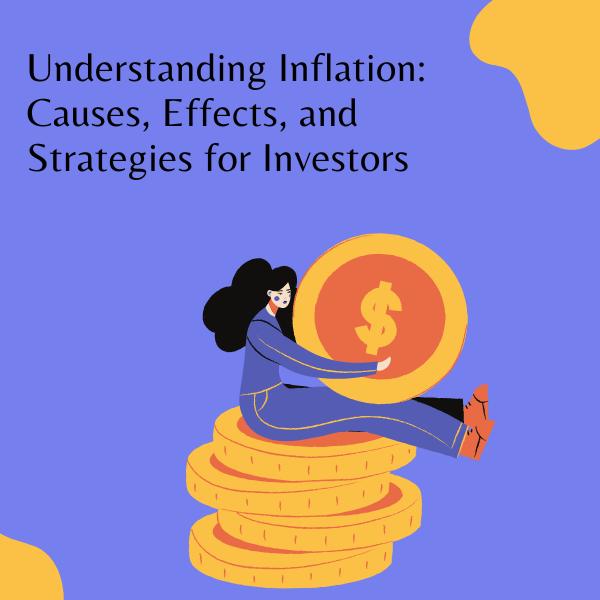Understanding Inflation: Causes, Effects, and Strategies for Investors
Understanding Inflation: Causes, Effects, and Strategies for Investors

Inflation is a persistent increase in the general price level of goods and services in an economy over a period of time. While moderate inflation is considered normal and even desirable for economic growth, high or volatile inflation can erode purchasing power, disrupt financial markets, and impact investment returns. In this article, we'll delve into the causes and effects of inflation, as well as strategies that investors can employ to protect their portfolios against its effects.
-
Causes of Inflation: Inflation can be triggered by various factors, including:
- Demand-Pull Inflation: Occurs when aggregate demand exceeds aggregate supply, leading to increased consumer spending and upward pressure on prices.
- Cost-Push Inflation: Arises from rising production costs, such as wages, energy, or raw materials, which are passed on to consumers in the form of higher prices.
- Monetary Inflation: Results from an increase in the money supply relative to the supply of goods and services, often driven by expansionary monetary policies by central banks.
-
Effects of Inflation:
- Reduced Purchasing Power: Inflation diminishes the value of money over time, reducing the amount of goods and services that can be purchased with a given amount of currency.
- Wealth Redistribution: Inflation can redistribute wealth from savers to borrowers, as the real value of debt decreases while assets, such as stocks and real estate, may appreciate in nominal terms.
- Uncertainty and Market Volatility: High or unpredictable inflation rates can create uncertainty in financial markets, leading to volatility in asset prices and investment returns.
-
Types of Inflation:
- Creeping Inflation: Characterized by a slow and steady rise in prices over time, typically in the range of 1-3% annually.
- Hyperinflation: Extreme inflationary conditions where prices skyrocket, often exceeding 50% per month, leading to a collapse in the value of the currency.
- Stagflation: Occurs when inflation rises simultaneously with stagnant economic growth and high unemployment, posing challenges for monetary policymakers.
-
Investment Strategies to Hedge Against Inflation:
- Equities: Stocks have historically provided a hedge against inflation, as companies can pass on higher costs to consumers through increased prices or benefit from rising revenues and profits.
- Real Assets: Investments in real assets such as real estate, commodities (e.g., gold, oil), and infrastructure can preserve purchasing power in inflationary environments.
- Inflation-Protected Securities: Treasury Inflation-Protected Securities (TIPS) and inflation-linked bonds provide investors with returns indexed to inflation rates, offering protection against purchasing power erosion.
- Diversification: A well-diversified portfolio that includes a mix of assets with low correlation to inflation can help mitigate the impact of inflation on investment returns.
-
Conclusion: Inflation is a critical consideration for investors, as it can significantly impact the real value of investment returns and purchasing power over time. By understanding the causes and effects of inflation and implementing appropriate investment strategies, investors can better position themselves to preserve wealth and achieve their financial goals in an inflationary environment. Stay informed, stay diversified, and stay prepared to navigate the challenges and opportunities that inflation presents in the investment landscape.








































